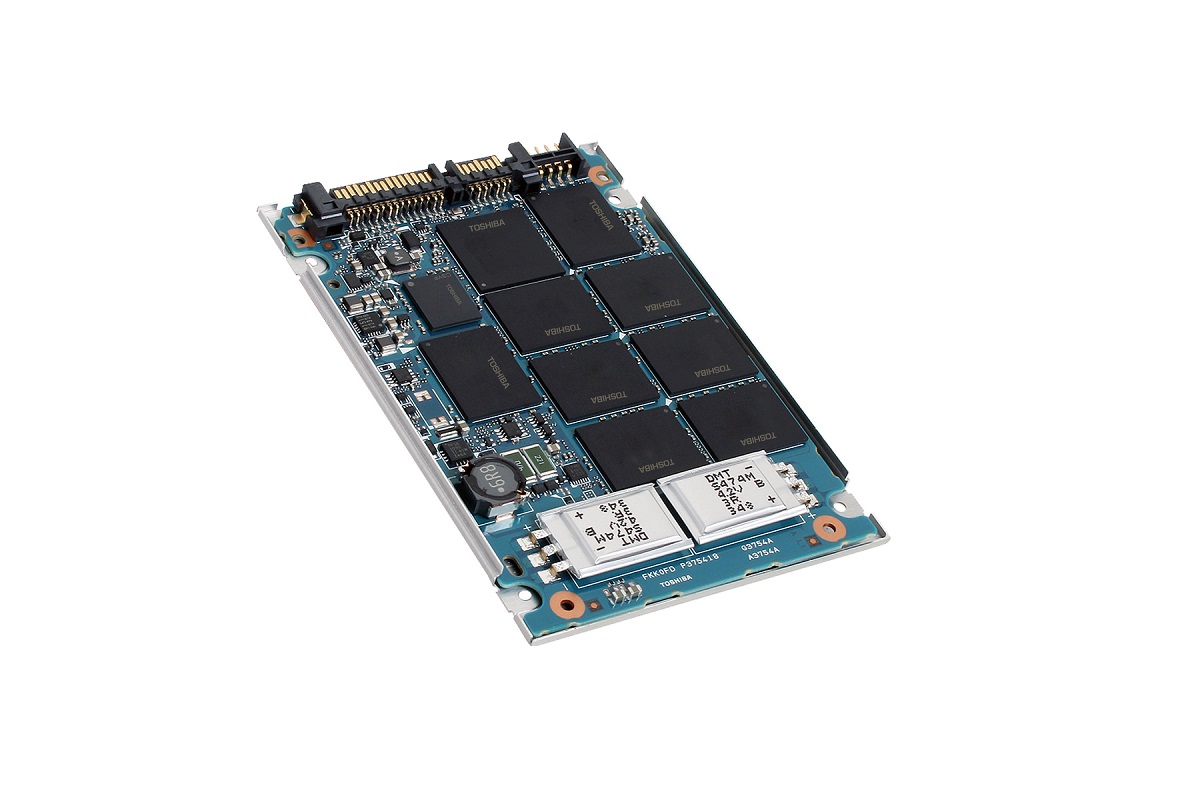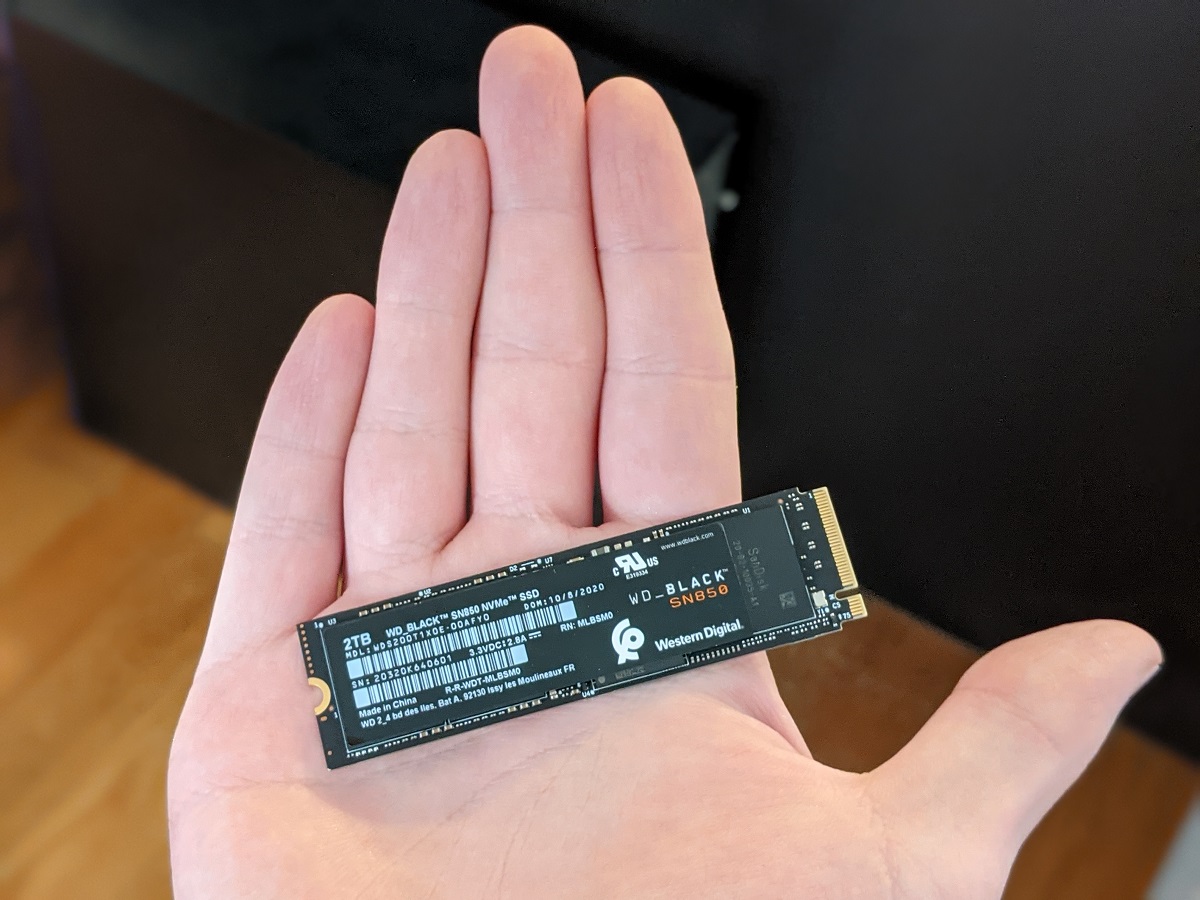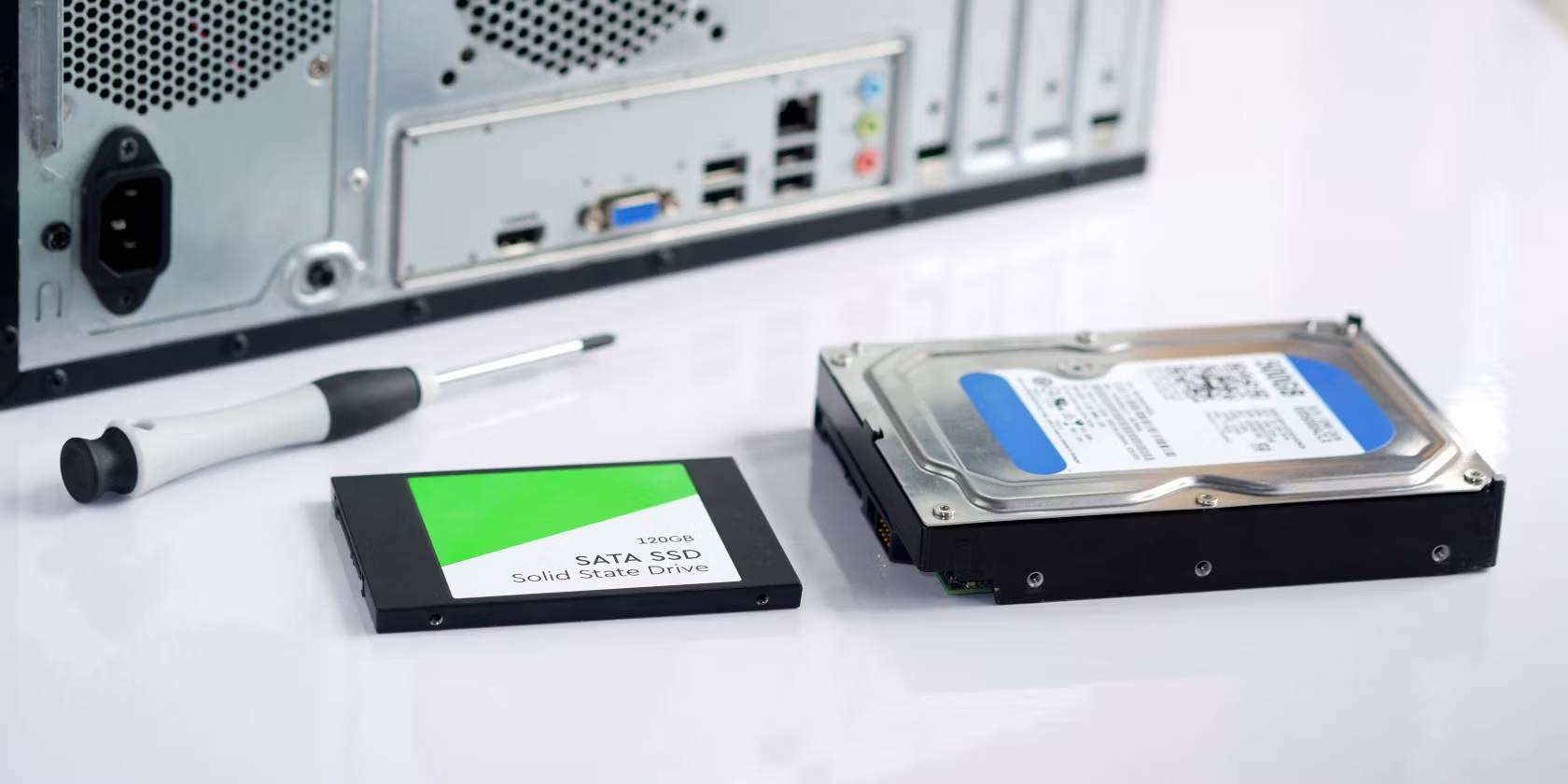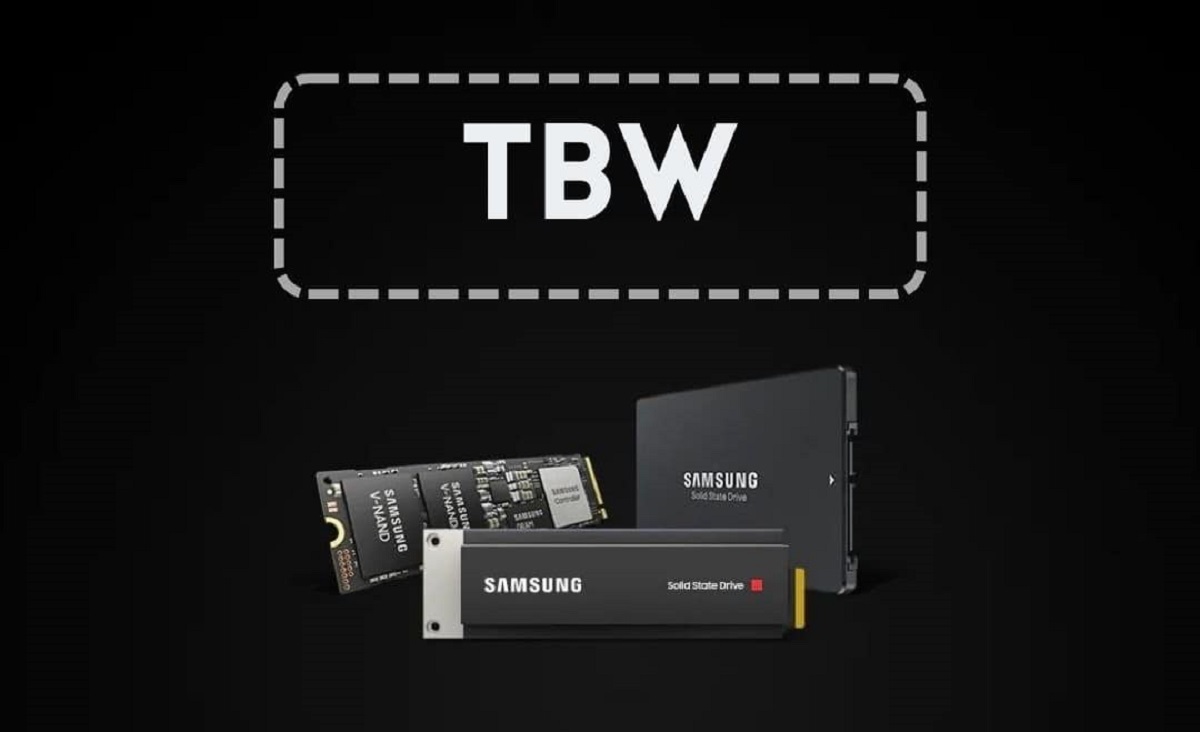Introduction
Welcome to the world of solid-state drives (SSDs) and the concept of over provisioning. As technology continues to advance, so does the need for efficient and high-performing storage solutions. In this article, we will explore what over provisioning SSD is all about, how it works, its benefits, drawbacks, and how you can implement it.
Over provisioning SSD is a technique used to allocate a portion of the storage space on a solid-state drive for internal use. This means that a certain amount of the drive’s capacity is reserved and not made available for user data storage. Over provisioning helps improve the overall performance, endurance, and lifespan of an SSD.
So, how does over provisioning SSD actually work? SSDs utilize a technology called NAND flash memory to store data. This NAND flash memory is organized into blocks, and each block consists of multiple pages. When data is written to an SSD, it is written to a page within a block. However, to perform a write operation, the SSD needs to erase the entire block first. This process, known as program-erase cycles, can cause performance degradation and decrease the lifespan of the SSD over time.
By over provisioning SSD, a specific portion of the drive’s capacity is set aside to distribute the data more evenly across the NAND flash memory. This helps to prevent excessive wear on any particular block, thereby reducing the impact of program-erase cycles and extending the overall lifespan of the drive.
Over provisioning SSD offers several benefits. Firstly, it improves the performance of the drive. By allocating additional space for internal use, the SSD has more room to perform functions such as wear leveling, garbage collection, and error correction. This results in faster data access, reduced latency, and an overall smoother user experience.
Additionally, over provisioning SSD enhances the durability and lifespan of the drive. The wear leveling algorithm ensures that data is distributed evenly across the NAND flash memory, thus preventing the overuse of specific blocks. This helps to minimize the impact of program-erase cycles, which are a significant factor in SSD wear and tear. As a result, over provisioning can extend the overall lifespan of the SSD.
Definition of Over Provisioning SSD
Over provisioning SSD refers to the practice of setting aside a certain amount of storage space on a solid-state drive (SSD) for internal use rather than user data storage. This reserved space is allocated to perform various operations such as wear leveling, garbage collection, and error correction, which helps enhance the performance, lifespan, and reliability of the SSD.
To understand over provisioning SSD better, let’s break down the components of the term:
1. Solid-State Drive (SSD):
An SSD is a storage device that uses NAND flash memory to store data. It has no moving parts, unlike traditional hard disk drives (HDDs). SSDs provide faster data access, improved durability, and lower power consumption compared to HDDs.
2. Over Provisioning:
Over provisioning refers to the intentional allocation of extra storage capacity beyond what is available for user data storage. Instead, this additional space is used for internal processes and optimizations within the SSD.
3. NAND Flash Memory:
NAND flash memory is a type of non-volatile storage technology used in SSDs. It allows for faster data access and has higher endurance compared to other types of memory, such as dynamic random-access memory (DRAM).
By implementing over provisioning SSD, SSD manufacturers reserve a specific percentage of the total storage capacity of the drive for internal use. This reserved space is invisible to the user and can vary depending on the manufacturer and SSD model.
The primary purpose of over provisioning is to improve the performance and reliability of the SSD. By allocating extra space for internal operations, the SSD can distribute data more efficiently across the NAND flash memory. This helps prevent excessive wear on specific cells or blocks, which can cause performance degradation and decrease the lifespan of the drive.
Overall, over provisioning SSD plays a crucial role in optimizing the performance, endurance, and lifespan of solid-state drives. It allows for efficient data management, reduces the impact of program-erase cycles, and enhances the overall user experience. By understanding the concept of over provisioning, users can make informed decisions when selecting and utilizing SSDs for their storage needs.
How Over Provisioning SSD Works
Over provisioning SSD works by designating a specific portion of the drive’s total storage capacity for internal use rather than user data storage. This reserved space is used to perform various operations that are crucial for optimizing the performance, lifespan, and reliability of the solid-state drive (SSD).
Here’s a breakdown of how over provisioning SSD works:
1. Allocation of Reserved Space:
During the manufacturing process, SSDs have a certain percentage of their total capacity allocated as reserved space. This reserved space is not visible to the user and is used exclusively by the SSD for internal operations.
2. Wear Leveling:
One of the primary functions of over provisioning is wear leveling. Wear leveling is a technique used to distribute data evenly across the NAND flash memory cells of the SSD. By doing so, it prevents specific cells or blocks from being overused, which can lead to degraded performance and a shorter lifespan of the drive.
3. Garbage Collection:
Another important operation performed through over provisioning is garbage collection. Garbage collection is the process of reclaiming unused or deleted data blocks and marking them as available for new data writes. By efficiently managing data blocks, garbage collection helps maintain consistent performance and prevents data fragmentation.
4. Error Correction:
Over provisioning also allocates space for error correction codes (ECC). ECC uses a mathematical algorithm to detect and correct errors that may occur during data read or write operations. By having adequate space for ECC, over provisioning ensures data integrity and reduces the chances of data corruption on the SSD.
5. Performance Enhancement:
By reserving space for internal operations, over provisioning SSD improves the overall performance of the drive. With additional capacity available for functions such as wear leveling, garbage collection, and error correction, the SSD can maintain optimal performance levels even under heavy workloads.
6. Extended Lifespan:
Over provisioning SSD has the advantage of extending the lifespan of the drive. By distributing data evenly across the NAND flash memory and reducing excessive wear on specific cells or blocks, over provisioning mitigates the impact of program-erase cycles. This results in a longer-lasting SSD with improved endurance.
In summary, over provisioning SSD involves designating a portion of the SSD’s capacity for internal operations such as wear leveling, garbage collection, and error correction. This technique improves performance, enhances reliability, and extends the lifespan of the SSD. By implementing over provisioning, SSD manufacturers can optimize the efficiency of their drives and offer users a higher quality storage solution.
Benefits of Over Provisioning SSD
Over provisioning SSD offers several benefits that contribute to improved performance, durability, and overall user experience. Let’s explore the key advantages of implementing over provisioning:
1. Enhanced Performance:
By allocating additional space for internal operations, over provisioning SSD improves the performance of the drive. With more capacity available for functions like wear leveling, garbage collection, and error correction, the SSD can maintain faster data access, reduced latency, and improved responsiveness. This translates into quicker file transfers, faster boot times, and smoother overall system performance.
2. Improved Endurance:
Over provisioning helps enhance the endurance of the SSD by preventing excessive wear on specific cells or blocks. The wear leveling algorithm, which distributes data evenly across the NAND flash memory, minimizes the impact of program-erase cycles. This results in a more balanced usage of the drive’s resources, reducing the risk of premature wear and extending the overall lifespan of the SSD.
3. Extended Lifespan:
As mentioned, over provisioning SSD contributes to a longer lifespan for the drive. By minimizing wear and tear on specific cells or blocks, over provisioning helps maintain the integrity of the NAND flash memory. This means that the SSD can endure a greater number of read and write operations over time before experiencing performance degradation. As a result, users can enjoy a reliable and long-lasting storage solution.
4. Data Integrity:
Over provisioning SSD allocates space for advanced error correction codes (ECC), which play a crucial role in maintaining data integrity. ECC helps detect and correct errors that may occur during data read or write operations, minimizing the chances of data corruption. With over provisioning, SSDs can ensure the accuracy and reliability of stored data, providing peace of mind to users.
5. Smooth Garbage Collection:
Garbage collection is a vital process carried out by the SSD to reclaim unused or deleted data blocks. With over provisioning, the SSD has sufficient space to perform efficient garbage collection. This helps prevent data fragmentation and ensures that the SSD can maintain consistent performance, even when dealing with extensive workloads or frequent data deletion.
6. Better Workload Handling:
Over provisioning SSD enables the drive to handle heavy workloads more effectively. By allocating additional capacity for internal operations, the SSD can optimize its resources to manage concurrent read and write requests efficiently. This leads to improved multitasking capabilities, faster response times, and better overall performance when handling demanding tasks.
Overall, over provisioning SSD offers significant benefits that contribute to a superior storage experience. From enhanced performance and durability to extended lifespan and data integrity, over provisioning ensures that SSDs function optimally, providing users with a reliable and high-performing storage solution.
Drawbacks of Over Provisioning SSD
While over provisioning SSD brings numerous benefits, it is essential to consider the potential drawbacks associated with this technique. Let’s explore some of the key drawbacks to be aware of:
1. Reduced Usable Capacity:
One of the significant drawbacks of over provisioning SSD is the reduction in usable capacity. Since a portion of the drive’s total capacity is reserved for internal operations, the available space for user data storage decreases. This means that users may have less storage capacity available for their files, applications, and other data.
2. Higher Cost:
Over provisioning SSD can lead to higher costs. Due to the reserved space and additional features required for internal operations, SSDs that utilize over provisioning technology tend to be more expensive compared to non-over provisioned drives with the same storage capacity. The higher cost must be considered when budgeting for storage solutions.
3. Performance Impact During Heavy Workloads:
During heavy workloads or sustained high levels of data transfer, over provisioning SSD may experience a slight performance impact. This is because the reserved space is used for internal operations, such as garbage collection and wear leveling, which can temporarily affect data read and write speeds. However, this impact is usually minimal and may not be noticeable in everyday usage.
4. Limited Control and Flexibility:
Over provisioning SSD reduces the control and flexibility that users have over the allocation of storage space. The reserved space is predetermined by the manufacturer and cannot be adjusted by the user. This lack of flexibility may inconvenience users who prefer to manage their storage space according to their specific needs or preferences.
5. Potential Over-Provisioning Management:
While over provisioning is designed to optimize SSD performance, there is a potential risk of mismanaging the reserved space. If the allocated over provisioning space is insufficient, it can lead to decreased performance and accelerated wear on the SSD. Conversely, if too much space is over provisioned, it can result in wasted storage capacity.
6. Compatibility Considerations:
Some older systems or operating systems may not fully support over provisioning SSD. It’s important to ensure that the system and software you are using are compatible with over provisioned drives to take full advantage of the benefits and features offered by over provisioning technology.
Despite these drawbacks, over provisioning SSD remains a widely adopted and effective technique for enhancing SSD performance, reliability, and lifespan. By understanding and considering these drawbacks, users can make informed decisions when selecting and utilizing over provisioned SSDs based on their specific requirements and priorities.
How to Over Provision SSD
If you’re looking to implement over provisioning on your solid-state drive (SSD), here are some steps to follow:
1. Check SSD Support:
Firstly, ensure that your SSD supports over provisioning. While most modern SSDs are equipped with this feature, it’s always a good idea to verify the manufacturer’s specifications or consult the documentation provided with your drive.
2. Backup Data:
Prior to implementing over provisioning, it is crucial to back up all your data. Over provisioning involves making changes to the drive’s capacity and can potentially result in data loss if not performed correctly. By having a backup, you can ensure that your valuable data is protected.
3. Determine Over Provisioning Space:
Next, decide on the amount of space you want to allocate for over provisioning. The specific percentage or amount of space required can vary depending on the SSD model and manufacturer recommendations. It is essential to strike a balance between providing sufficient reserved space for internal operations and maintaining an adequate amount of storage capacity for your data.
4. Use SSD Manufacturer’s Tools:
Many SSD manufacturers provide dedicated software tools that allow you to configure over provisioning on your drive. These tools typically provide an interface for adjusting the amount of reserved space and performing other related optimizations. Check the manufacturer’s website for any available software tools specifically designed for your SSD model.
5. Utilize Operating System Support:
Some operating systems, such as Windows, provide built-in support for over provisioning SSD. In Windows, you can use the Disk Management utility or third-party software to adjust the partition sizes and allocate the desired space for over provisioning.
6. Firmware Updates:
Regularly check for firmware updates for your SSD. Firmware updates might include performance enhancements, bug fixes, and new features related to over provisioning. Keeping your SSD’s firmware up to date ensures that you can take advantage of the latest optimizations and improvements.
7. Monitor and Maintain:
After implementing over provisioning, monitor your SSD’s performance and health regularly. SSD management tools and utilities provided by the manufacturer can help keep track of the drive’s status, including wear level, temperature, and overall health. Regularly perform diagnostics and maintenance tasks to ensure optimal performance and longevity.
It is worth noting that the process of over provisioning may vary slightly depending on the specific SSD model and manufacturer. Always refer to the manufacturer’s documentation and guidelines for precise instructions tailored to your particular drive.
By following these steps and guidelines, you can over provision your SSD effectively, improving its performance, endurance, and lifespan. Always proceed with caution and ensure you have the necessary knowledge and understanding of the process before making any changes to your SSD’s settings.
Conclusion
Over provisioning SSD is a technique that offers numerous benefits for optimizing the performance, durability, and overall user experience of solid-state drives. By allocating a specific portion of the drive’s capacity for internal operations, such as wear leveling, garbage collection, and error correction, over provisioning improves performance, extends the lifespan, and enhances the reliability of SSDs.
We have explored the definition and working principle of over provisioning SSD, highlighting how it distributes data evenly across the NAND flash memory and reduces wear on specific cells or blocks. This results in improved performance, reduced latency, and increased overall system responsiveness.
While over provisioning SSD brings several advantages, it is essential to consider the potential drawbacks, such as reduced usable capacity, higher costs, and limited control over storage allocation. However, these drawbacks can be outweighed by the benefits of advanced performance, extended lifespan, enhanced data integrity, and better workload handling.
To implement over provisioning on an SSD, it is crucial to check SSD support, back up data, determine the desired amount of reserved space, utilize manufacturer’s tools or operating system support, keep firmware updated, and monitor the SSD’s performance and health regularly.
In conclusion, over provisioning SSD is a valuable technique for maximizing the performance and durability of solid-state drives. As technology evolves and demands for faster and more reliable storage solutions increase, over provisioning continues to play a significant role in ensuring optimal SSD functioning and delivering an improved storage experience to users.

























